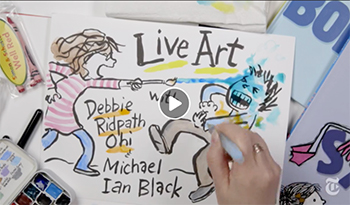So Jeff and I have a gas barbecue now! Many of you experienced bbq types are probably shrugging and thinking, "So what?" but we're gas barbecue virgins. I've already been happily poring over the grilling cookbook given to us as a housewarming gift by our friends Alison and Jeff.
Last night we used it for the first time and had grilled steaks we picked up during our walk around the neighbourhood yesterday, topped with blue cheese from the cheese shop, with coconut rice and Caesar salad. Yum.
Back to my trip report:
 Part 1 (Paris)
Part 1 (Paris) -
Part 2 (more Paris) -
Part 3 (Fonte de' Medici) -
Part 4 (Montalcino and Montefiridolfi) -
Part 5 (La Petraia) -
Part 6 (Florence) -
Part 7 (more Florence) -
Part 8 (Cinque Terre) -
Part 9 (Pisa, Fiesole and Volpaia) -
Part 10 (Lost in Siena) -
Part 11 (Siena) -
Part 12 (Rome) -
FinalAbout the photo above: we came across a wedding while in Siena (when we
meant to visit Siena, that is), and I happened to find myself standing beside the official photographer when I snapped this photo just before the happy couple turned and went inside a restaurant.

Siena is a medieval town in Tuscany, Italy which was originally settled in the time of the Etruscans (c. 900 BC - 400 BC).
According to this Wikipedia entry, the Etruscans changed central Italy by using irrigating to reclaim previously unfarmable land and their custom of building settlements in heavily armoured hill-forts.
Some feel that this original matrilineal-focused Pagan society was one of the reasons why Roman Goddesses such as Diana and (with the arrival of Christianity) the Virgin Mary came to be of such importance to many Italians. We saw Virgin Mary pictures everywhere, tucked into the most unexpected places, like the end of this otherwise ordinary-looking street:

The Romans founded a town called Saenna Julia on the site of a pre-existing Etruscan settlement, and this Roman origin helps explain the town's emblem: a she-wolf suckling
Romulus and Remus. "According to legend, Siena was founded by Senius, son of Remus, who was in turn the brother of Romulus, after whom Rome was named."
(From this Wikipedia entry) You can see this emblem in statues and other artwork all over Siena:

Sadly, the main facade of the Siena Duomo was under construction when we visited, so we only got to see the scaffolding cover instead:

But we did get to see
the bell tower, with its interesting combination of black and white marble. Black and white are the symbolic colors of Siena, derived from the black and white horses of the city's founders.
The cathedral was originally designed and completed between 1215 and 1263 on the site of an earlier structure.
Here's a photo of what was originally intended to be a massive addition, planned in 1339, that would have more than doubled the size of the structure. Sadly, the Black Plague in 1348 killed off many of the people in Siena. That plus the discovery of some major construction plan faults halted construction permanently. The floor of the nave now serves as a parking lot and museum.
We strolled through Piazza del Campo, a shell-shaped town square paved in red brick and marble:

This square is famous for hosting the
Palio di Siena (known locally as the
Palio delle contrade), the best-known palio in Italy. The horse race is held twice each year on July 2nd and August 16th, during which time Siena is packed with fans and tourists alike.
Here's an overhead photo of what the square looks like during the race. (!) Apparently there's also a huge pageant before the race.
Each rider represents one of the
contrada, or districts, in Siena.
The
contrade were originally set up in the Middle Ages for military purposes but are now simply areas of localised patriotism. With rare exception, you can only become part of a
contrada by being born into it. This means that sometimes members of the same family belong to different
contrade, depending on where they happened to be in the city when they were born.
Every
contrada has its own museum, church, fountain and animal symbol. The photo above was taken in the Panther
contrada, for example. Traditionally, Panther residents were grocers and chemists and Panther colours are red, blue and white. Other
contrade include: Aquila (Eagle), Bruco (Caterpillar), Chiocciola (Snail), Civetta (Owl), Drago (Dragon), Giraffa (Giraffe), Istrice (Porcupine), Leocorno (Unicorn), Lupa (She-Wolf), Nicchio (Shell), Oca (Goose), Onda (Wave), Pantera (Panther), Selva (Forest), Tartuca (Tortoise), Torre (Tower) and Valdimontone (Ram). You can find out more about the contrade of Siena
here.

(Above: supposedly the smallest window in the world)
Yes, I realize I'm going on a bit long about the
contrade, but I find this social structure fascinating. Each
contrada is sort of like a big family, responsible for its own. From
an article about Siena :
"You are born into the
contrada of your parents, are baptized in your
contrada's open-air font, learn your
contrada's allies and enemies at an early age, go to church in your
contrada's oratory, almost invariably marry within your
contrada, spend your free time hanging out in the
contrada social club, and help elect or serve on your
contrada's governing body. Even your funeral is sponsored by the
contrada, which mourns your passing as family. In a way, it's like a benevolent form of Hollywood's mythical Mafia--but no
contrada tolerates unlawfulness, and as a result Siena has a shockingly low crime rate."
A couple of scenarios immediately come to mind: A mother-to-be experiencing early labour pains when she is in another
contrada...does she hurry home to make sure her offspring is born into the family
contrada? How deeply does the rivalry go between
contrades? Is it limited to the palio, or is marriage outside of one's
contrada frowned upon? A Romeo-Juliet situation immediately comes to my mind, of course -- I'm such a romantic sap.
While in Italy, I read
Too Much Tuscan Sun : Confessions of a Chianti Tour Guide by Dario Castagno and Robert Rodi, based on Dario's experiences as a guide. I found all the typos (probably from the translation) distracting but still enjoyed Dario's enthusiasm and love of Italy, especially when he talked about being part of the Caterpillar
contrada in Siena.

Above: A pigeon refreshes itself at the 15th century Gaia fountain (Fountain of Joy). The fountain replaced the original fountain, which was of the goddess Venus. Venus was blamed for the outbreak of the Black Plague, however, and was destroyed and buried outside the city walls in hopes of ridding Siena of her "evil influence."
We visited the
Palazzo Pubblico (town hall) while we were in Siena, and were mightily impressed by the series of frescoes inside. Jeff was especially tickled to see the original painting, "Siena," upon which
the game was based.
I found Siena to be a wonderful town with a rich history, full of interesting places to explore and see; Jeff and I both want to come back here someday for a longer stay.
Next Blathering: ROME and the final leg of our trip.
To be continued...
 Tuesday, June 13, 2006 at 4:01PM
Tuesday, June 13, 2006 at 4:01PM 



















































